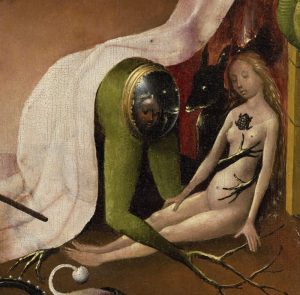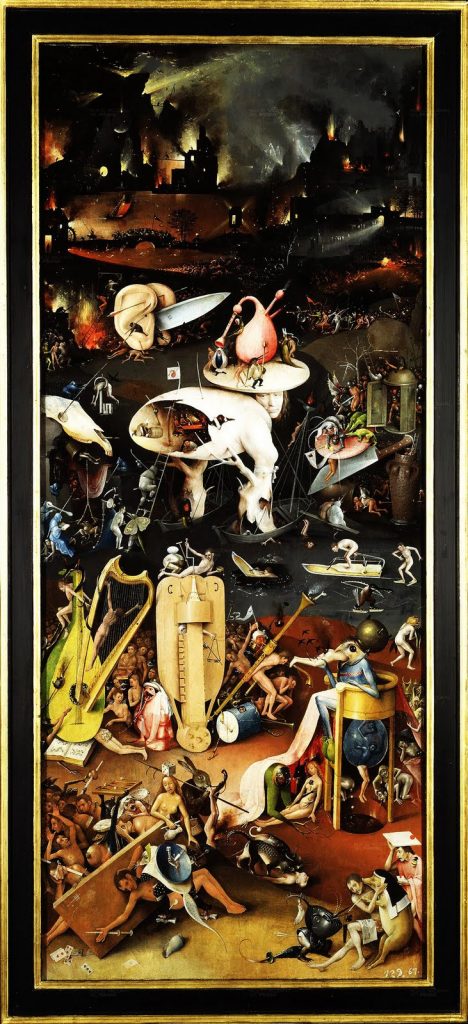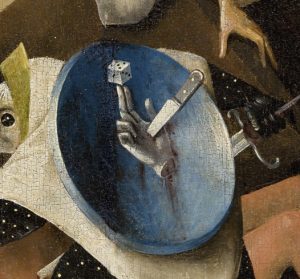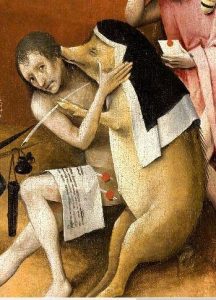Overview
The Garden of Earthly Delights is presented as an oil on wood triptych in the open position, measuring 7’3” x 12’9”. A triptych is a three paneled work, hinged side-by-side, often hung as an altarpiece. However, it is important to note that Bosch did not intend for his work to be hung as an altar, but as an inventive form of secular art to be viewed in unity as one narrative. In this particular example of hermetic chaos, The Garden of Earthly Delights can be opened flat, revealing the triptych or displayed closed in diptych form.
The work of Hieronymus Bosch is imaginatively complex and overwhelming. While his seemingly futile creations hold delusional wonder, many of his works were commissioned by both religious and secular patrons whom wished to convey purposive meaning. This triptych is one of Bosch’s most famous, often a subject of various scholarly interpretation. The piece is located in the Prado Museum in Madrid, Spain.
Exterior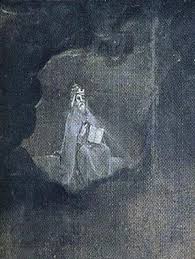
In the closed form, the exterior diptych panels present the viewer with a warm, grey-toned, transparent sphere shape. The earthly globe is filled by water on the lower half, land and plant life in the middle area, and ominous clouds among the top quarter of the image. In the top left corner of the outer panel sits the figure of god, pictured with an open book as he hovers above the earth-like image. Inscribed above the figure of god translated to English reads, “For he spoke and it was; he commanded, and it stood”. The outer diptych is often interpreted as the creation of the world, thus, the interior is presents a vision of future time. 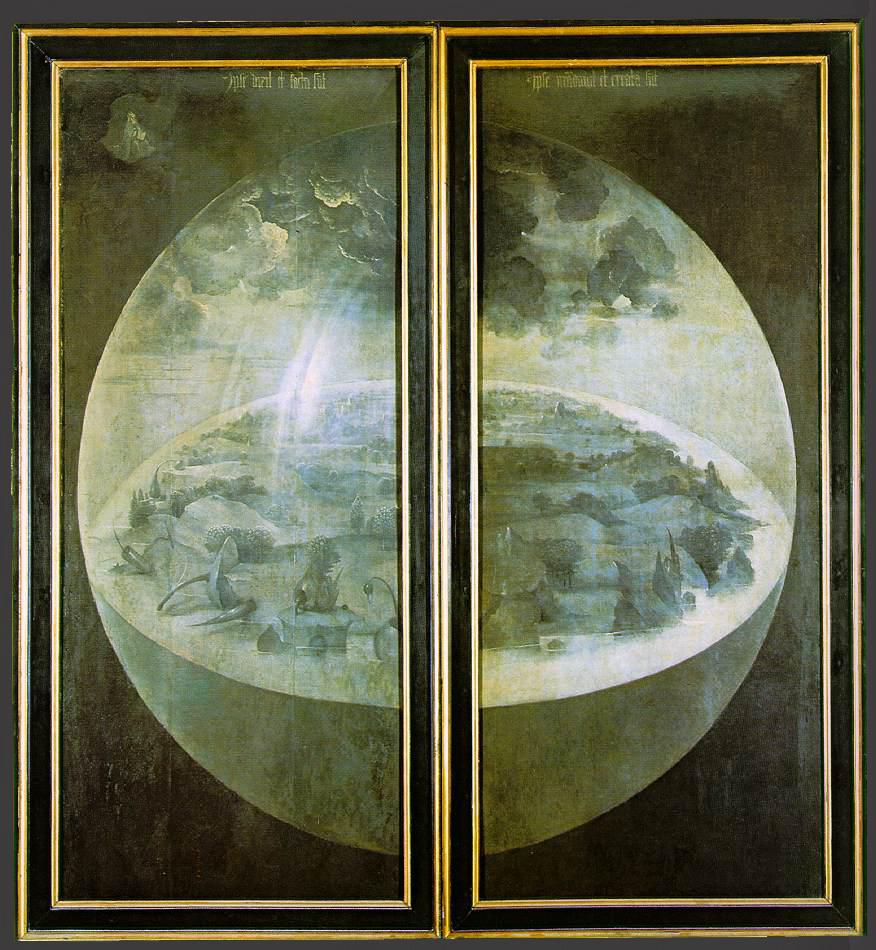
Interior
Upon opening, the viewer is submerged in three very stimulating, rich colored, sequential scenes that work from left to right. Some scholars interpret the interior panels to convey the Old Testament, before the fall of man. However, the apocalyptic, antichrist theory, during the fall of man, is intriguing and grounded in biblical text as well. Belting concludes that it is impossible to find a concessive narrative between the three panels, however, when the Christ figure is identified as the Antichrist, the triptych carries a sequential reading of the work as a whole. 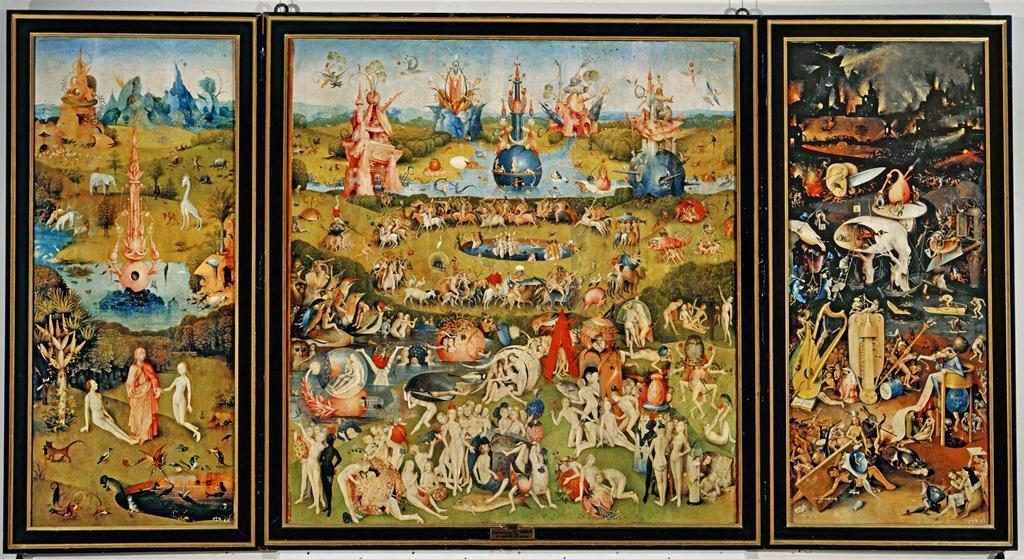
Left Panel
The left panel recounts an unusual tale of Adam and Eve. The scene features many hybrid animals, hidden faces, and strange architecture amid a dreamlike landscape.
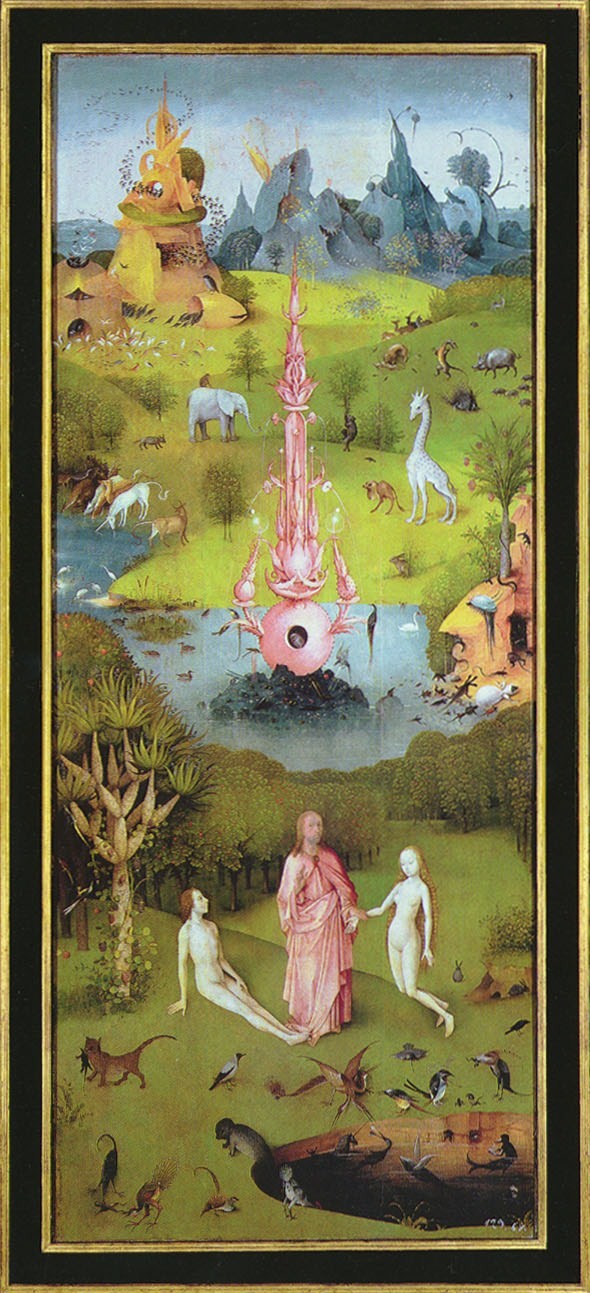
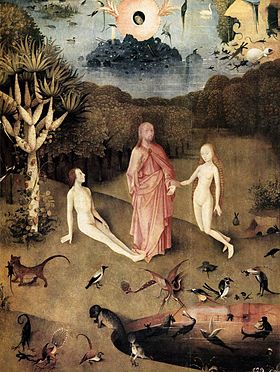
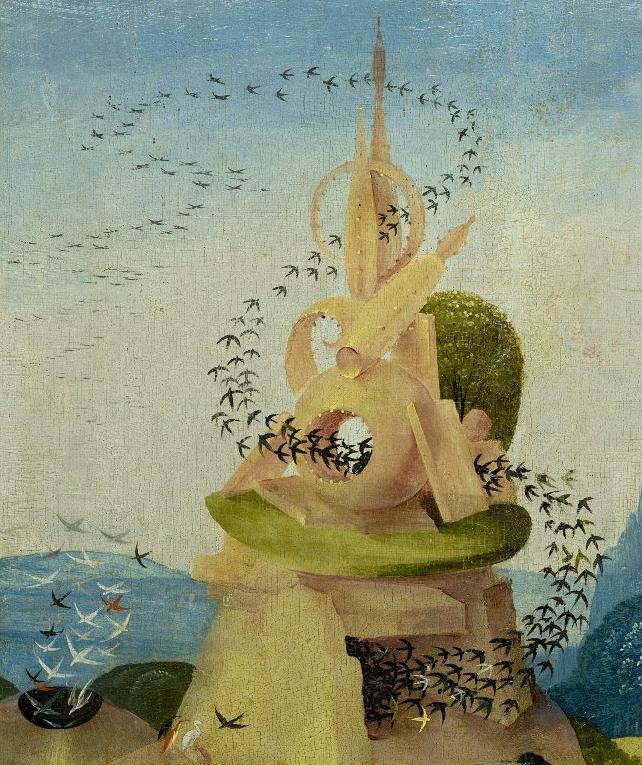
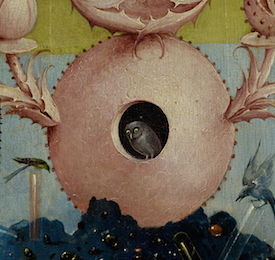
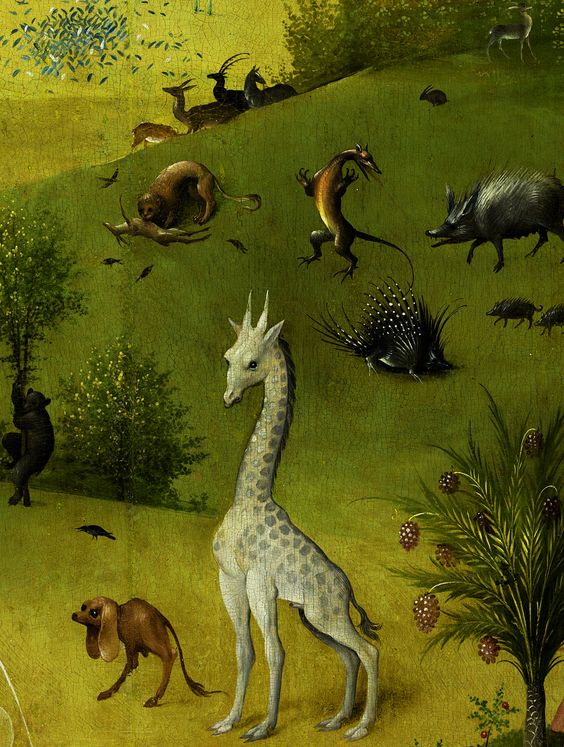
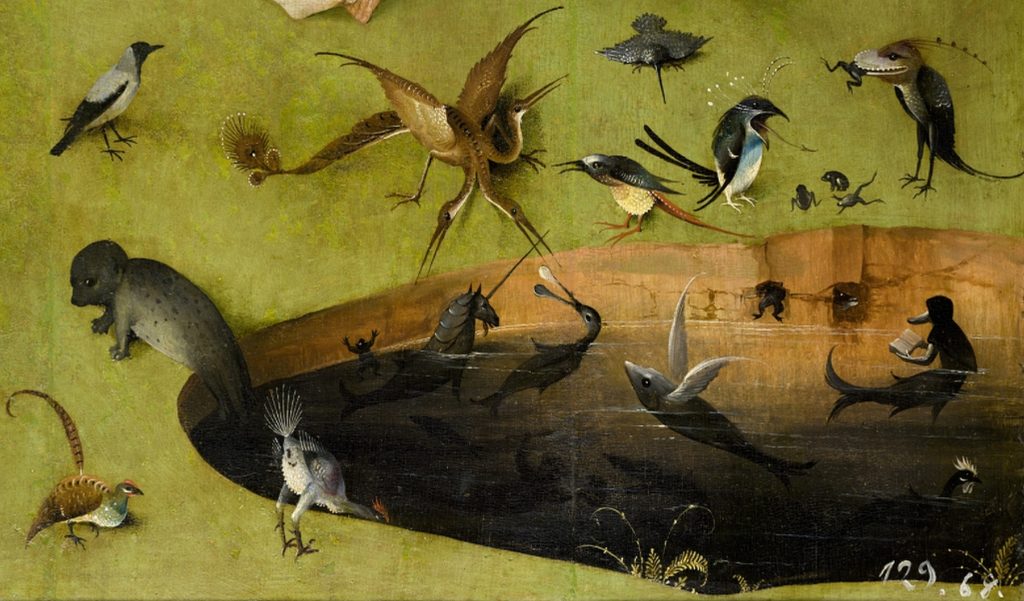
Center Panel
In the center panel, nude humans and other hybrid animals gambol about in the midst of a surreal and absurd utopian garden. The morbid Dr. Seuss-like scene involves peculiar processions, circular forms, and architectural components. Many of the human figures are pictured emerging from eggs, orbs, and shells, riding birds and other hybrid animals, and eating or being stuffed with enormous fruits and berries.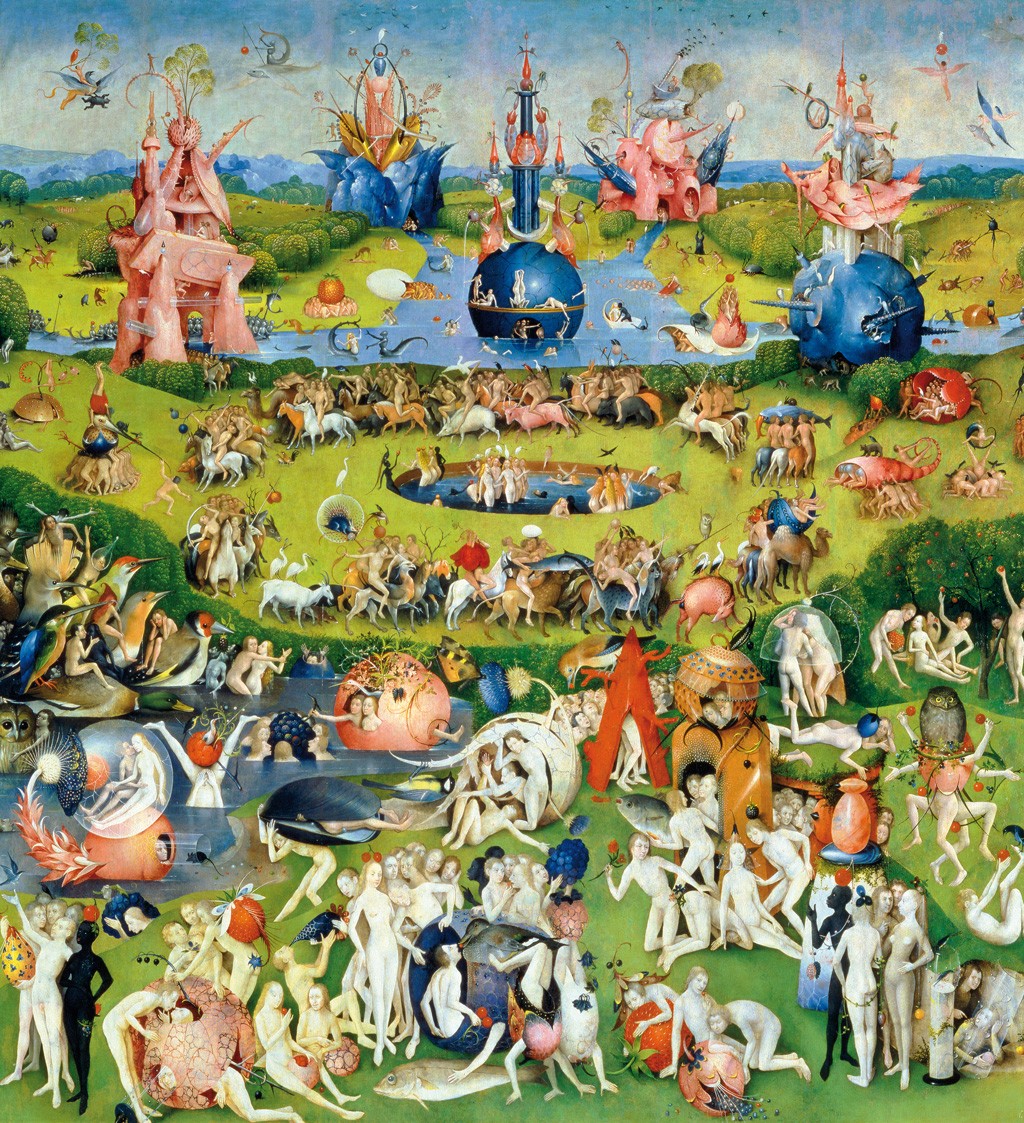
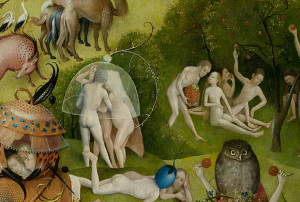
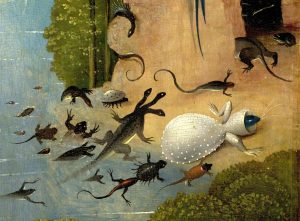
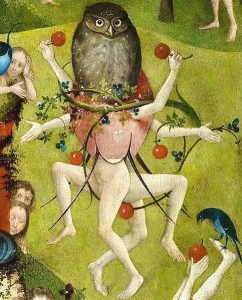
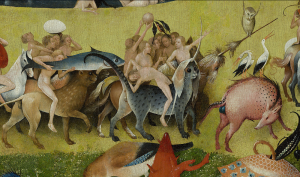
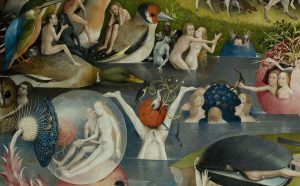
Right Panel
The seemingly odd and whimsical center panel transforms into a dark, evil, and unsettling place in the third panel. On the right side panel, a nightmarish, hell-like mirage is depicted. The disturbing landscape portrays a diabolic affair where humans are disfigured and tormented by monstrous animals in a musical hell.